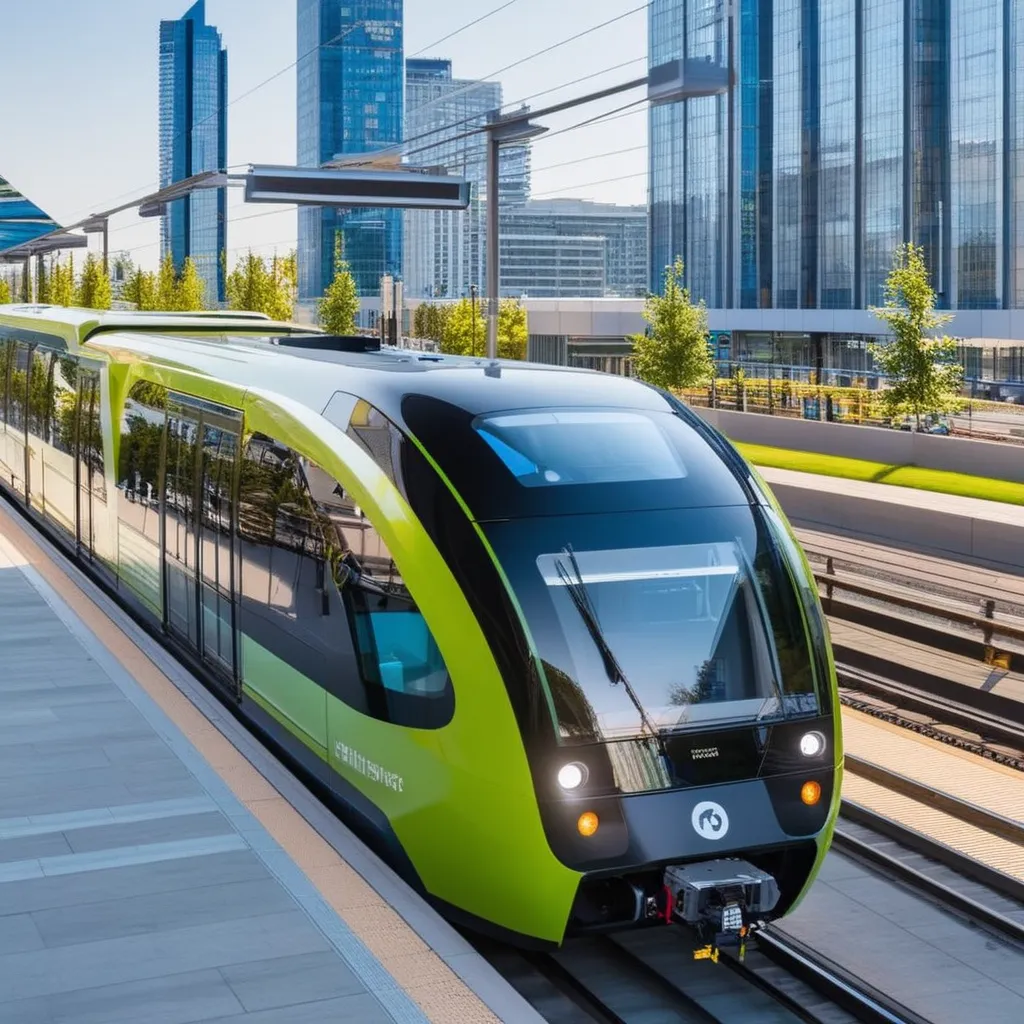The Future of Urban Transportation: Smart and Sustainable Solutions
As someone who has navigated the bustling streets of urban landscapes, the evolving narrative of urban transportation has piqued my curiosity. Let's embark on a journey into the future of urban mobility, exploring the smart and sustainable solutions that promise to reshape the way we move through our cities.

Personal Urban Odyssey: Navigating the Concrete Jungle
From Traffic Jams to Sustainable Dreams
My own experiences with urban transportation have been a mixed bag of traffic jams, crowded public transit, and the occasional search for elusive parking spots. The daily urban odyssey served as a backdrop for contemplating the need for innovative solutions that could alleviate congestion, reduce environmental impact, and make urban mobility more efficient.
Rise of E-Mobility: Electric Dreams on Wheels
Personal Encounters with Electric Vehicles
The buzz around electric vehicles (EVs) has become more than just whispers on the horizon; it's a reality slowly transforming the urban transportation landscape. Personal anecdotes of witnessing the rise of EVs, from sleek electric cars to nimble e-scooters, highlight the shift toward cleaner and quieter modes of commuting. The prospect of reducing carbon emissions and dependence on fossil fuels through widespread adoption of EVs holds the promise of a greener urban future.
Connectivity in Transit: The Smart Revolution
Smart Tech Making Waves
As I explored the smart city initiatives shaping urban transportation, personal encounters with connected technologies painted a picture of a more seamless commute. Anecdotes of using real-time transit apps, smart traffic lights optimizing flow, and integrated mobility platforms underscore the transformative impact of connectivity in transit. The smart revolution aims to enhance not just individual modes of transport but the entire urban mobility ecosystem.
Micro-Mobility: Navigating the Last Mile
Scooters, Bikes, and the Last Mile Conundrum
Personal reflections on the challenges of the "last mile" in urban transportation revealed the emergence of micro-mobility solutions. Anecdotes of utilizing electric scooters and bikes to bridge the gap between public transit and final destinations highlighted the convenience and flexibility of these compact modes of transport. The integration of micro-mobility into urban transit systems addresses the need for efficient and eco-friendly solutions for short-distance commuting.
Autonomous Vehicles: Steering Toward a Driverless Future
Imagining Roads Without Drivers
The prospect of autonomous vehicles navigating city streets has transitioned from science fiction to a tangible future. Personal musings on the idea of driverless cars sharing the road with traditional vehicles and pedestrians opened up a realm of possibilities. Anecdotes of envisioning safer and more efficient roadways, free from human error, underscore the potential of autonomous vehicles to revolutionize urban transportation.
Inclusive Urban Planning: Pedestrian-Friendly Paradigms
Personal Observations on Pedestrian-Centric Spaces
The future of urban transportation isn't confined to vehicles alone; it extends to reimagining urban spaces with pedestrians in mind. Personal observations of pedestrian-friendly zones, widened sidewalks, and vibrant public spaces highlighted the importance of inclusive urban planning. Anecdotes of strolling through areas designed for people rather than cars emphasized the shift toward creating cities that prioritize the well-being of their residents.
Challenges on the Horizon: Addressing the Hurdles
Personal Encounters with Urban Transportation Challenges
Navigating the discussion on the future of urban transportation isn't without acknowledging the hurdles. Personal encounters with issues such as infrastructure limitations, public resistance to change, and the need for significant investments underscore the challenges that must be addressed for these innovative solutions to gain widespread acceptance.
Community Engagement: Shaping the Future Together
Personal Involvement in Urban Mobility Conversations
As I engaged in conversations about the future of urban transportation, personal involvement in community initiatives highlighted the significance of collective action. Anecdotes of participating in discussions about sustainable mobility, attending town hall meetings, and advocating for inclusive transit policies underscored the role of community engagement in shaping the future of urban transportation.
Conclusion: Paving the Way to a Smarter, Greener Urban Future
The future of urban transportation is a tapestry woven with threads of innovation, sustainability, and community collaboration. From electric dreams to smart solutions and pedestrian-friendly paradigms, the road ahead promises transformative changes in how we navigate our cities. As someone invested in the urban experience, the prospect of a smarter, greener future is not just a vision; it's a collective endeavor to pave the way for urban transportation that is efficient, sustainable, and enhances the quality of city life for all.<

No comments:
Post a Comment